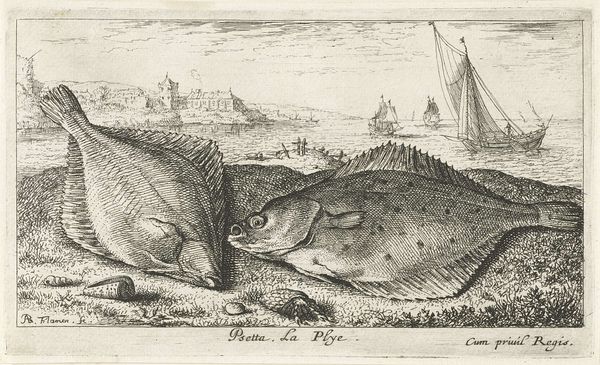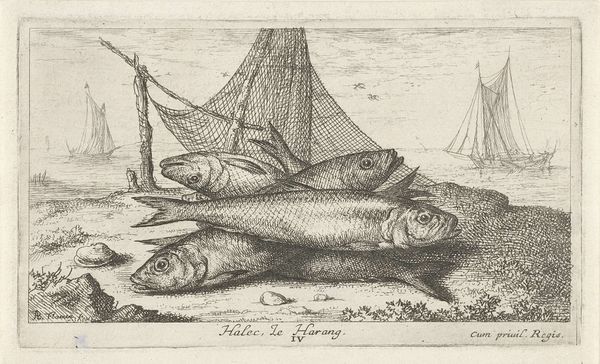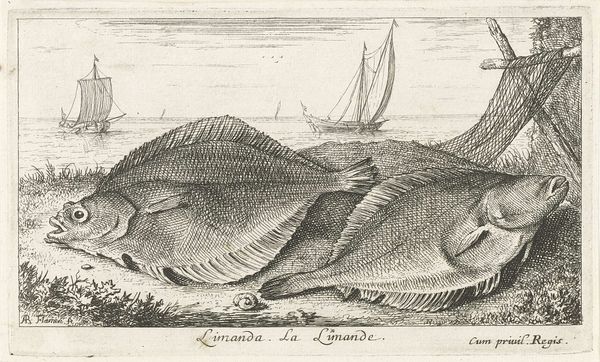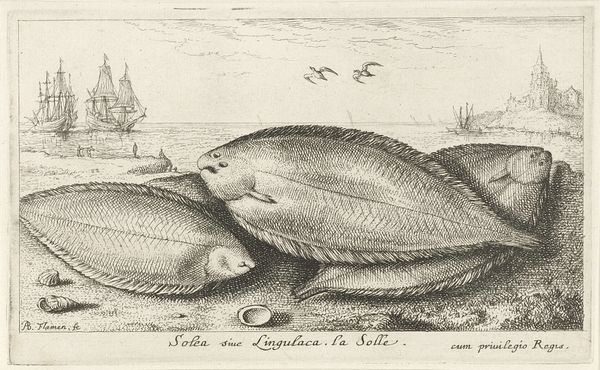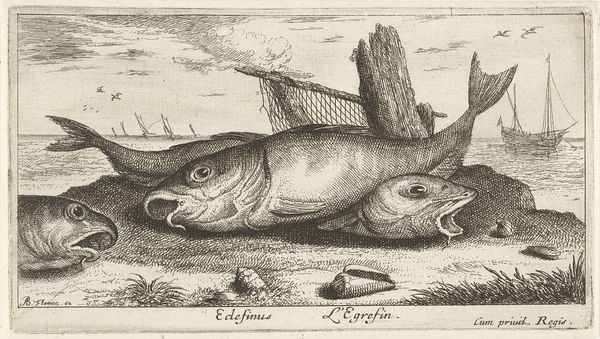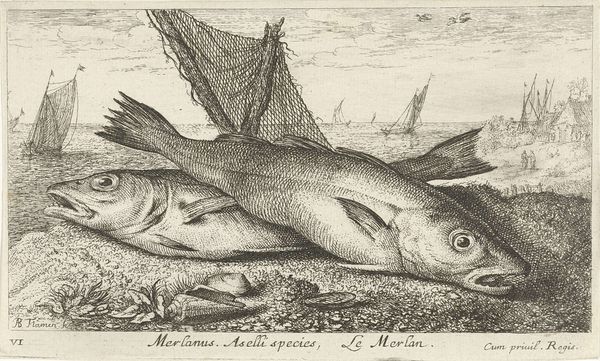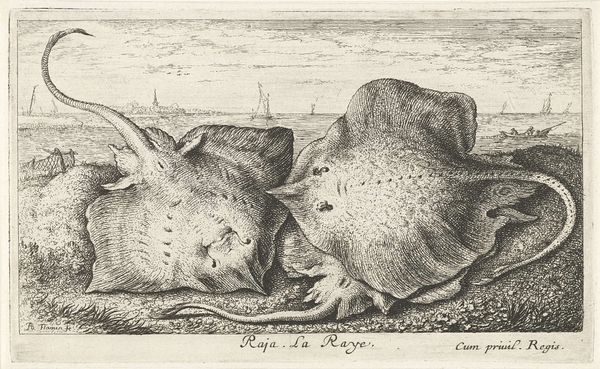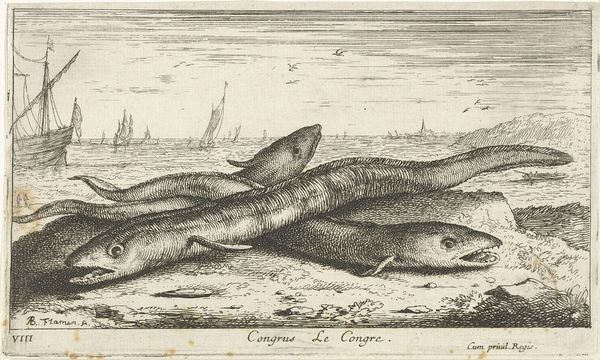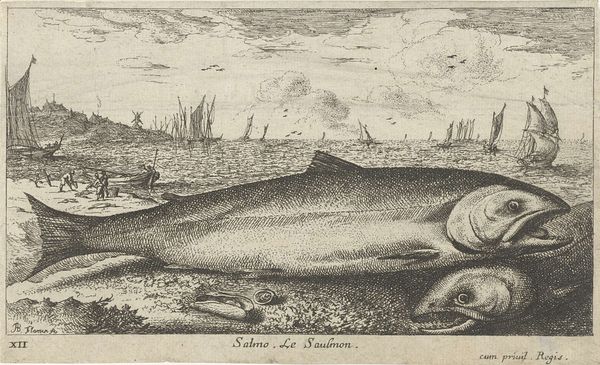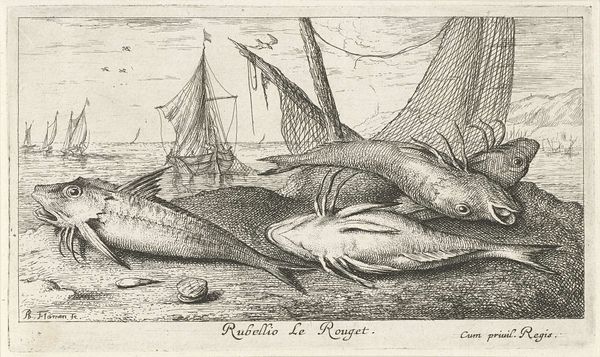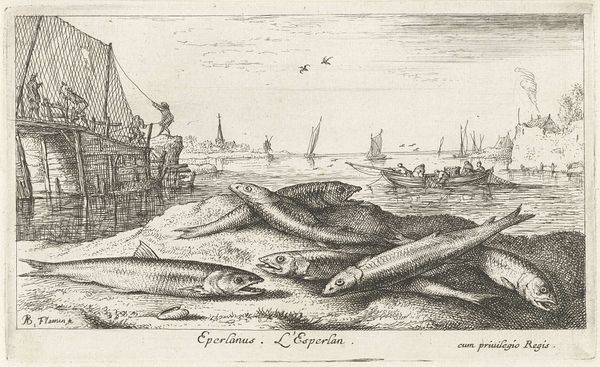
print, etching
#
dutch-golden-age
# print
#
etching
#
landscape
#
genre-painting
#
realism
Dimensions: height 106 mm, width 171 mm
Copyright: Rijks Museum: Open Domain
Albert Flamen made this print of two flounders on the beach using etching, sometime in the 17th century. With etching, an artist covers a metal plate with a waxy, acid-resistant ground, then scratches an image into that ground. When the plate is bathed in acid, the exposed lines are eaten away, leaving an impression that can be inked and printed. The resulting image can vary from thin and delicate, to deep and expressive, according to the duration and strength of the acid bath. Here, Flamen expertly uses the etching process to describe the texture and form of the fish. Note the tiny lines that create the illusion of their scales, and the precise rendering of their fins. The print captures the stark reality of the day’s catch, a reminder of the labor involved in bringing food to market. These flounders, freshly caught, are presented not just as objects of still life, but as symbols of human effort and the rewards of working on the water.
Comments
No comments
Be the first to comment and join the conversation on the ultimate creative platform.
